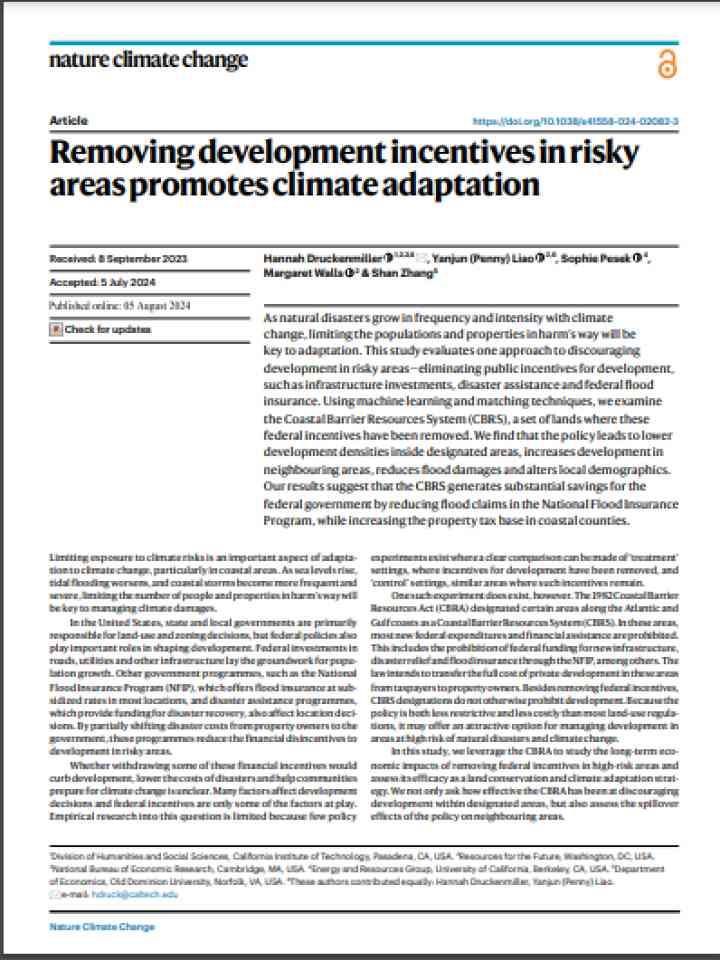Removing development incentives in risky areas promotes climate adaptation
This study evaluates one approach to discouraging development in risky areas-eliminating public incentives for development, such as infrastructure investments, disaster assistance and federal flood insurance. Using machine learning and matching techniques, the authors examine the Coastal Barrier Resources System (CBRS), a set of lands where these federal incentives have been removed.
Results indicate that removing federal development incentives can be a cost-effective option for preventing over-development in risky areas while generating co-benefits. Still, programmes like the CBRS are designed to pre-empt development in risky areas, not assist in managed retreat. In areas where strategic relocation of people and capital is deemed necessary, other policy interventions are likely to be required.
Explore further
